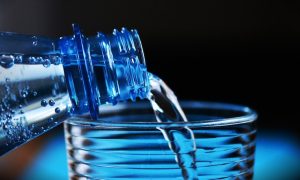Blog
Water at high temperatures and pressures

The characteristic ability of water to behave as a polar solvent (dissolving medium) changes when water is subjected to high temperatures and pressures. As water becomes hotter, the molecules seem much more likely to interact with nonpolar molecules. For example, at 300 °C (572 °F) and high pressure, water has dissolving properties very similar to acetone (CH3COCH3), a common organic solvent.
Water exhibits particularly unusual behaviour beyond its critical temperature and pressure (374 °C [705.2 °F], 218 atmospheres). Above its critical temperature, the distinction between the liquid and gaseous states of water disappears—it becomes a supercritical fluid, the density of which can be varied from liquidlike to gaslike by varying its temperature and pressure. If the density of supercritical water is high enough, ionic solutes are readily soluble, as is true for “normal” water; but, surprisingly, this supercritical fluid can also readily dissolve nonpolar substances—something ordinary water cannot do. Because of its ability to dissolve nonpolar substances, supercritical water can be used as a combustion medium for destroying toxic wastes. For example, organic wastes can be mixed with oxygen in sufficiently dense supercritical water and combusted in the fluid; the flame actually burns “underwater.” Oxidation in supercritical water can be used to destroy a wide variety of hazardous organic substances with the advantage that a supercritical-water reactor is a closed system, so there are no emissions released into the atmosphere.
Physical properties
Water has several important physical properties. Although these properties are familiar because of the omnipresence of water, most of the physical properties of water are quite atypical. Given the low molar mass of its constituent molecules, water has unusually large values of viscosity, surface tension, heat of vaporization, and entropy of vaporization, all of which can be ascribed to the extensive hydrogen bonding interactions present in liquid water. The open structure of ice that allows for maximum hydrogen bonding explains why solid water is less dense than liquid water—a highly unusual situation among common substances.
